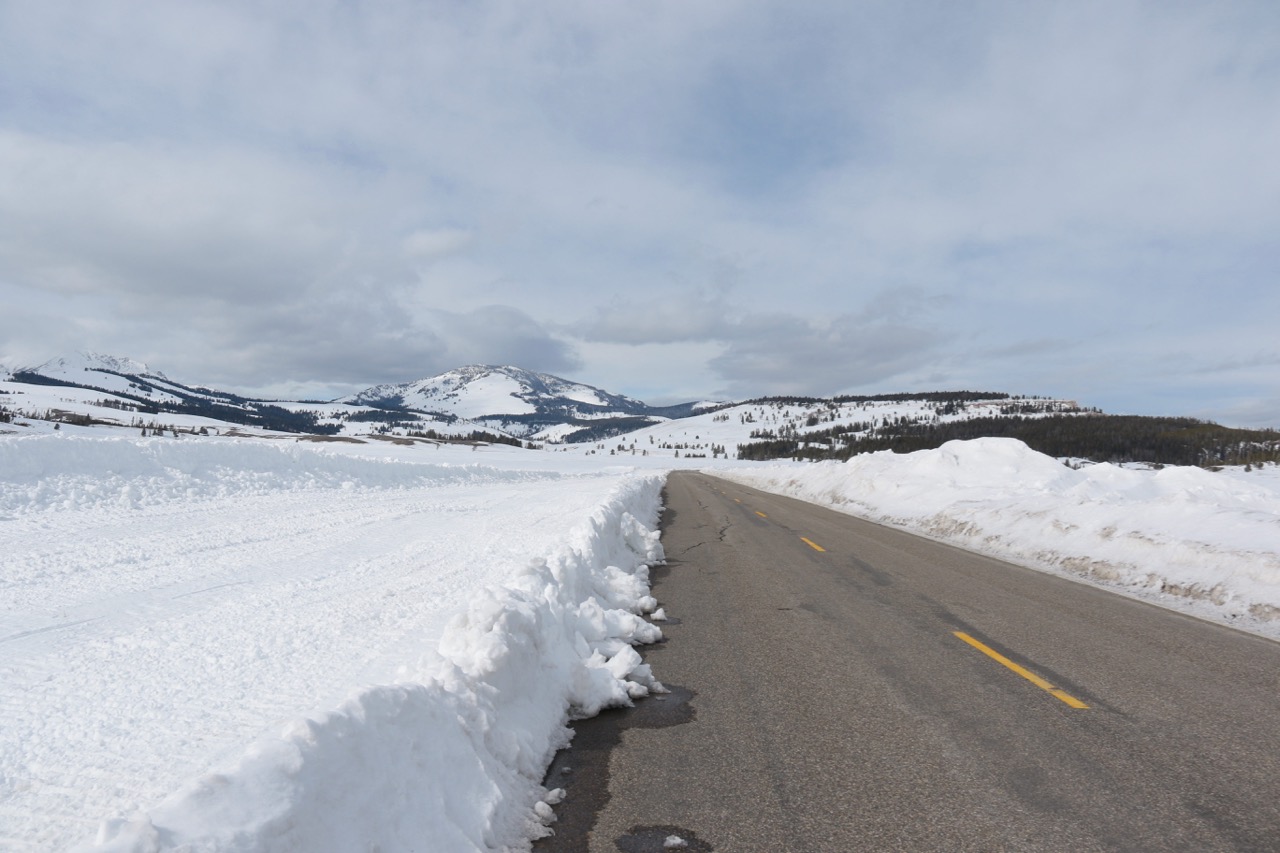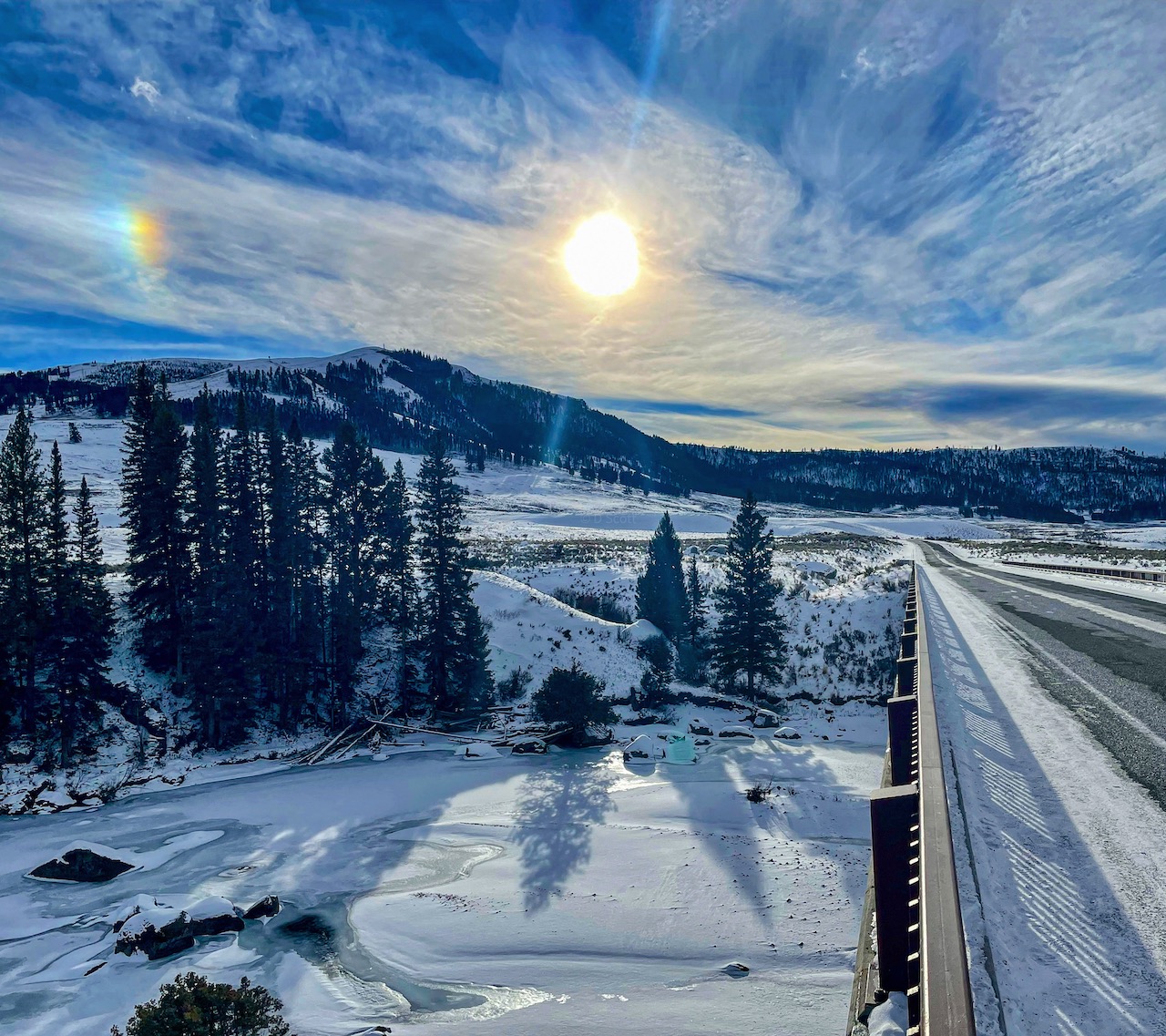Good news for those going to Yellowstone between now and April 20th, 2018. Many of the park’s roads are open for foot traffic! That means you can explore some sections of the park on your bike or on foot without worrying about cars or traffic. Below is a press release from Yellowstone National Park, as well as a few pictures from my road adventure in the park on March 27th.
The press release was only about bikes, so I added a few tidbits for runners in the post. As someone who ran all the roads in Yellowstone National Park in the summer of 2017, I can tell you the views from the roads are truly stunning and even better when you can take your time.
Beginning Wednesday, March 28, bicyclists and road runners willing to brave the unpredictable elements of spring can cycle select roads in Yellowstone National Park. Road segments include Mammoth Hot Springs to Willow Park and the West Entrance to Roaring Mountain. Until conditions improve, it will not be possible to travel between Mammoth Hot Springs and the West Entrance because the road construction area (about five miles between Willow Park and Roaring Mountain) is under construction, unpaved, deeply rutted, and muddy.
As conditions allow, bicycles and foot traffic will be permitted from the East Entrance to the east end of Sylvan Pass, and the South Entrance to West Thumb. Check the Spring and Fall Bicycling web page for the status of the road segments.
There is no access to Old Faithful or Canyon until those interior park roads open to public motorized vehicle access on Friday, April 20.
A spring bicycle or road running trip into Yellowstone must be taken seriously. Quickly changing weather can be challenging. Roads may close temporarily due to weather conditions. Snow and ice may still cover sections of road. Tall snow banks may line roads and pullouts may be snow packed. Wildlife may be on the roads.




Bicyclists and runners will likely encounter and must yield to snowplows and other motorized vehicles operated by park employees or construction workers readying the park for spring opening. Bicyclists are required to ride single file and follow all other rules of the road.
You should prepare to encounter bears, bison, elk, wolves, and other wildlife at any time. It is illegal to approach wildlife, within any distance that disturbs or displaces the animal. Riders are strongly encouraged to turn around if they encounter wildlife on the road and carry bear spray. You also must stay out of closed areas.
No services are available along these sections of road. Cell phone coverage throughout the park is sparse and unreliable for communicating emergencies. Riders should plan for self-rescue or repair, and be prepared to spend an extended period of time in winter conditions in the event they experience a mechanical breakdown, injury, or other emergency.
Call 307-344-2109 from 8:00 a.m. to 4:30 p.m. on weekdays for updated road access information.
EXPERIENCE YELLOWSTONE NATIONAL PARK WITH THIS INCREDIBLE GUIDEBOOK.
After having been to Yellowstone over 30 times in 20 years, I have put on the miles, stopped at nearly every gas station, rest stop and scenic area from Seattle, Washington to Gardiner, Montana. I have stayed in the campgrounds, eaten at the restaurants and experienced the lodges. I know Yellowstone, I know the drive and I want to share it with you. The information I give has no hidden agenda. I want to give you the best trip to Yellowstone from Seattle as possible and this guidebook can do that.




